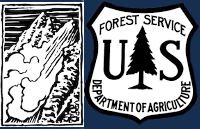GNFAC Avalanche Advisory for Wed Mar 6, 2013
Bridger Range Madison Range Gallatin Range
Lionhead area near West Yellowstone Cooke City
The past two days of no snow and light wind are helping the snowpack strengthen and stabilize. Although weak layers can form at the surface within hours, once buried they can take weeks or even months to gain strength. Today, we have three problems to look for which are all found in the top three feet of the snowpack.
This picture was taken yesterday around Cooke City. Thin wind slabs formed with the weekends new snow and wind. Although small and shallow, they can still sweep you into dangerous terrain. Photo: B. Fredlund
Forecast link: GNFAC Avalanche Advisory for Wed Mar 6, 2013
GNFAC Avalanche Advisory for Tue Mar 5, 2013
Bridger Range Madison Range Gallatin Range
Lionhead area near West Yellowstone Cooke City
GNFAC Avalanche Advisory for Mon Mar 4, 2013
Bridger Range Madison Range Gallatin Range
Lionhead area near West Yellowstone Cooke City
A skier triggered this slide in steep terrain near Cooke City. Fortunately nobody was caught. New snow and strong winds created wind slabs that grew in size and distribution as the day progressed.
Photo Beau Fredlund
This human triggered slide occured near History Rock in the northern Gallatin Range. Two people were caught, but nobody was injured. This specific area is not the main ski slope and is not traveled frequently by skiers. The slope angle was close to 40 degrees and the party had three separate "whumphs" on the traverse to this slope. Collapses are a red flag that the snow is very unstable and avalanche terrain should be avoided. All of us at the GNFAC thank them for relaying this story and picture. Photo JM
GNFAC Avalanche Advisory for Sun Mar 3, 2013
Bridger Range Madison Range Gallatin Range
Lionhead area near West Yellowstone Cooke City
Skiers in Beehive Basin found a layer of buried surface hoar on an east aspect below the ridgeline. This layer consistenly propagated in stability tests and kept the group from skiing steep terrain.
Photo Alex Merienthal
Forecast link: GNFAC Avalanche Advisory for Sun Mar 3, 2013
